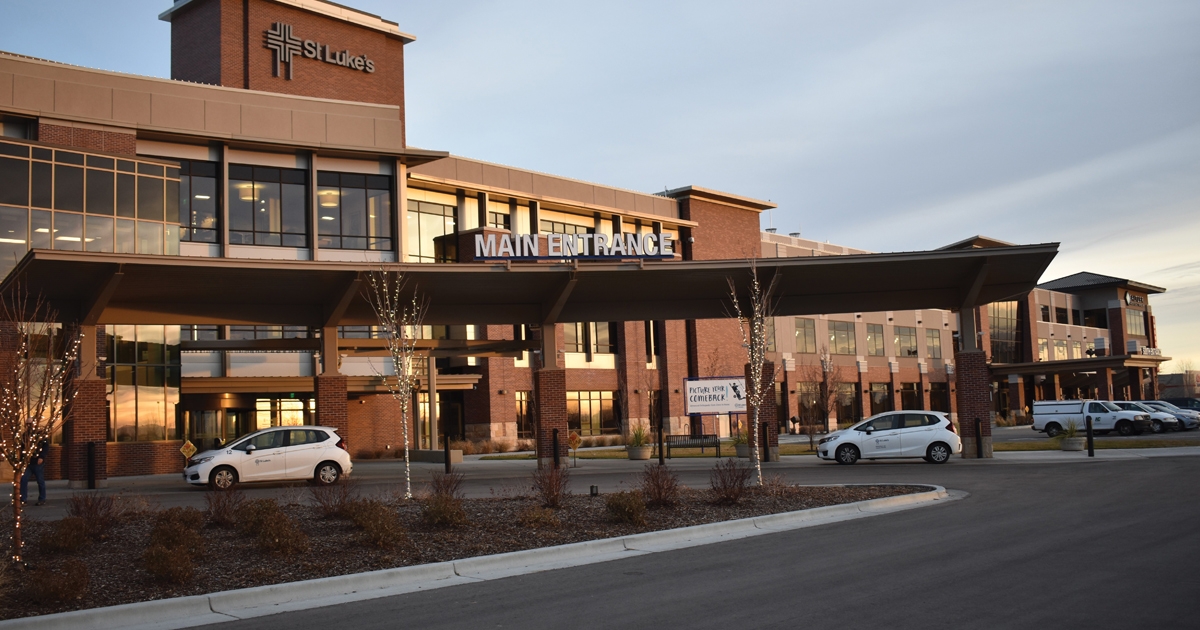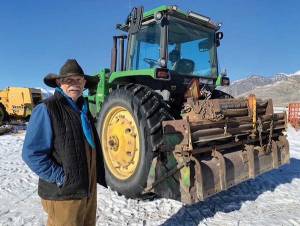Three years in the making, a new Nampa medical clinic is open for business. Like the Family Medicine Residency of Idaho (FMRI) program in Boise with its 43-year history, the Canyon County program trains family medicine doctors while serving the community with quality, affordable care.
As both a federally qualified health center for patients and a teaching health center for residents, the FMRI Nampa Program is designed to prepare primary care physicians for full-spectrum practice in underserved and rural areas, where people are older, sick, and poorer, according to Kim Stutzman, MD, FAAFP, program director.
“I’m honored to have been a small-town rural physician for 12 years, caring for the youngest to the oldest in our community,” she says.
Following her own family medicine residency training in Spokane, Wash., Dr. Stutzman practiced in White Salmon, Wash., a town of about 2,000 residents in the Columbia River Gorge. She provided OB/GYN, nursing home and hospice care in addition to office and hospital-based medicine before moving to Boise to pursue her dream of educating new doctors to become family physicians.
“Seeing them grow into the role and stretch their wings is an incredible honor,” she says. “I have now watched 11 classes or more than 150 doctors graduate, many of them now providing care in the rural communities around our state and elsewhere.”
After medical school, but before independent practice, doctors must complete residency training in a particular specialty before becoming board certified in that specialty. Optional fellowship training to acquire a subspecialty may also occur after residency training. Family medicine is the broadest scope practice, with primary care physicians often coordinating patient care with other medical specialists.
Dr. Stutzman was the program director for the Caldwell and Magic Valley Rural Training Track at FMRI for two years before preparing to launch the Nampa residency program last February. She’s been with FMRI as a physician-educator since 2007. While the first family medicine residents will not officially start their rotations until this summer, the clinic’s three medical doctors, a nurse practitioner, and a psychologist have been seeing patients since last fall.
“We help patients control their high blood pressure or diabetes—it’s like saving a life in slow motion,” says Rey Celestino, NP. He also spends much of his clinic time helping patients transition from hospital care. “For older adults, managing medications is very important,” he says. “Following an acute hospital stay, patients may be prescribed multiple medications, in addition to ones they may already be taking for chronic conditions.”
Also considered a patient-centered medical home, the Nampa clinic uses an integrated treatment model, providing a one-stop-shop for patients and their families that includes outpatient care from birth to end-of-life. Family medicine also focuses on prevention and early management of health problems, so a dietician, clinical pharmacist, behavioral health counselors, and community health workers are also part of the treatment team.
In addition to providing care, the FMRI Nampa Program is dedicated to increasing the number of active physicians in Idaho, which ranks 49th out of 50 states for number of doctors per capita (46th for primary care physicians). Except for Ada and Blaine counties and part of Bonneville county, most of the state is considered a primary care health professional shortage area (HPSA). The new residency program will train six residents in each three-year cohort, or 18 altogether, compared to 36 in Boise.
HPSAs are federal designations that identify and indicate geographic areas or populations with a deficit in primary care services within medical, dental, and mental health categories. Canyon County is considered a population group HPSA, which means a significant portion of the population live at or below the federal poverty limit. Many are uninsured. Rates of diabetes and obesity are higher than national averages, cancer screening rates for women are lower, and the overdose death rate in Nampa is almost twice the national rate.
A recent graduate herself, Kelsey Wertzler, MD joined the faculty of FMRI about a year ago. Her interest in women’s maternity and infant health led her to the new Nampa clinic.
“It’s an interesting opportunity to be part of building something from the ground up—in terms of both patient care and resident training,” she says. “We know the need is here for vulnerable populations.”
While currently housed in the Saltzer Medical Group office building in old Nampa, by summer of 2020, the FMRI Nampa clinic will relocate to the new St. Luke’s Nampa Hospital north of the interstate. The new community hospital opened in October 2017 to meet the needs of one of the fastest growing areas of Idaho, the fastest growing state in the nation. The U.S. Census Bureau projects the Canyon County population to grow from 131,053 in 2000 to 268,164 by 2030.
In addition to a medical office building, the St. Luke’s Nampa campus is the future home of Nampa MSTI (Mountain States Tumor Institute). Close proximity to the inpatient facility will allow residents to complete rotations in obstetrics, internal medicine, surgery, and emergency medicine as well as family medicine. Outpatient rotations in gynecology, sports medicine, and geriatrics are also included. Not far away, the St. Luke’s Children’s Hospital in Boise provides opportunities for inpatient pediatric training.
Idaho currently ranks 49th of 50 states in the number of residency training positions per capita—6.7 medical residents per 100,000 population, versus 28.1 per 100,000 in the U.S. overall.
Moreover, 27 percent of Idaho doctors are over 60 and will reach retirement age in the next decade. A 10-year strategic plan for graduate medical education in Idaho calls for increasing the number of residents and fellows in training to raise the per capita rate to 17.7, still shy of the national average.
Since studies show that 50 to 75 percent of physicians practice within 100 miles of where they complete their residency training, Idaho needs more residency training programs to increase the number of physicians caring for our citizens, especially as the Baby Boomer generation ages.
Dr. Stutzman’s passion for rural and underserved health care has created just such an opportunity in booming Canyon County, Idaho.
In March 2019, she will be honored as one of the Idaho Business Review’s Women of the Year for her commitment to her patients and community, and dedication to training the next generation of family physicians in Idaho.
She is an outstanding family physician, medical educator, and community leader, according to her nominators for the award, and a true champion for rural and underserved communities. ISI










